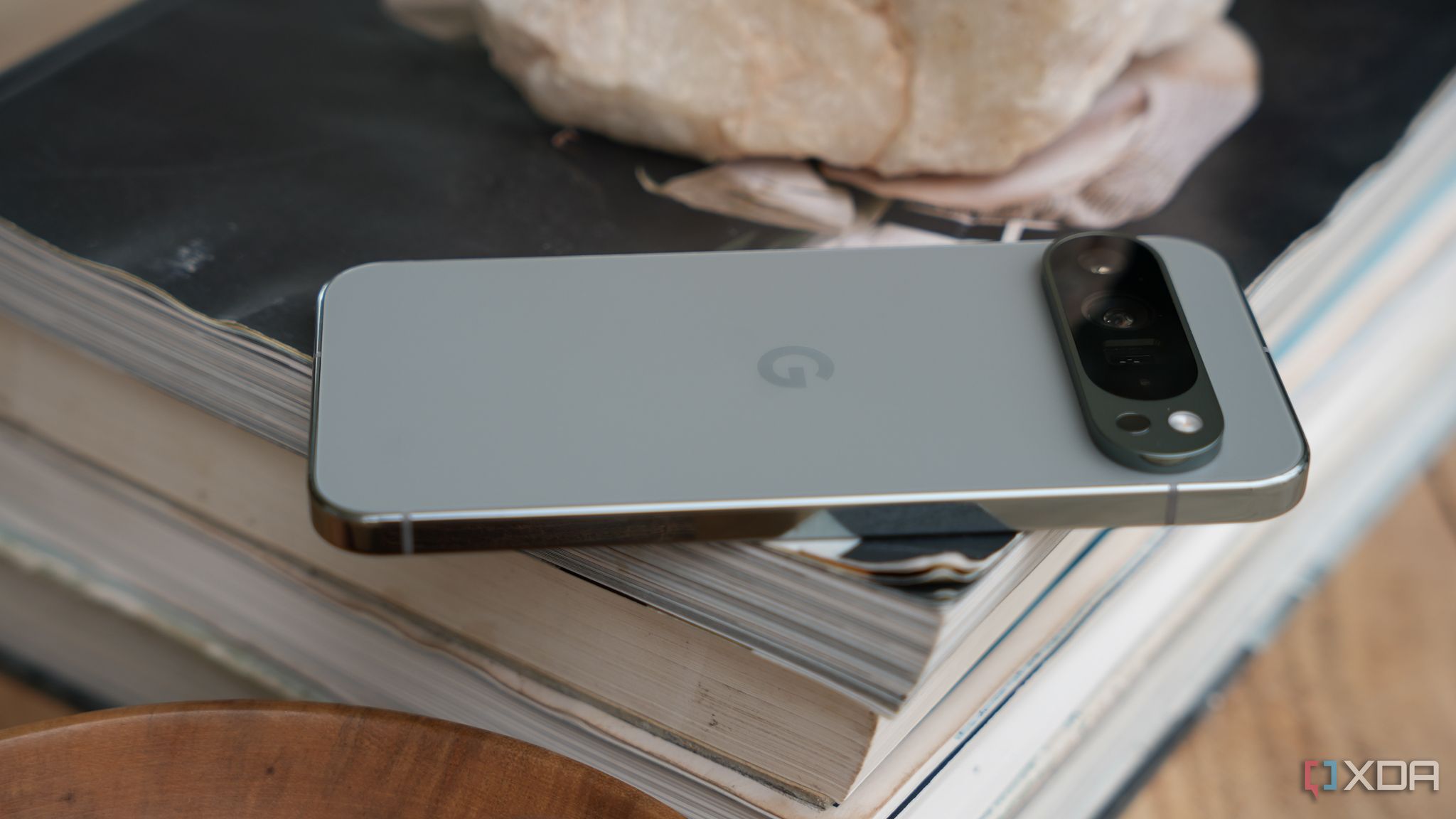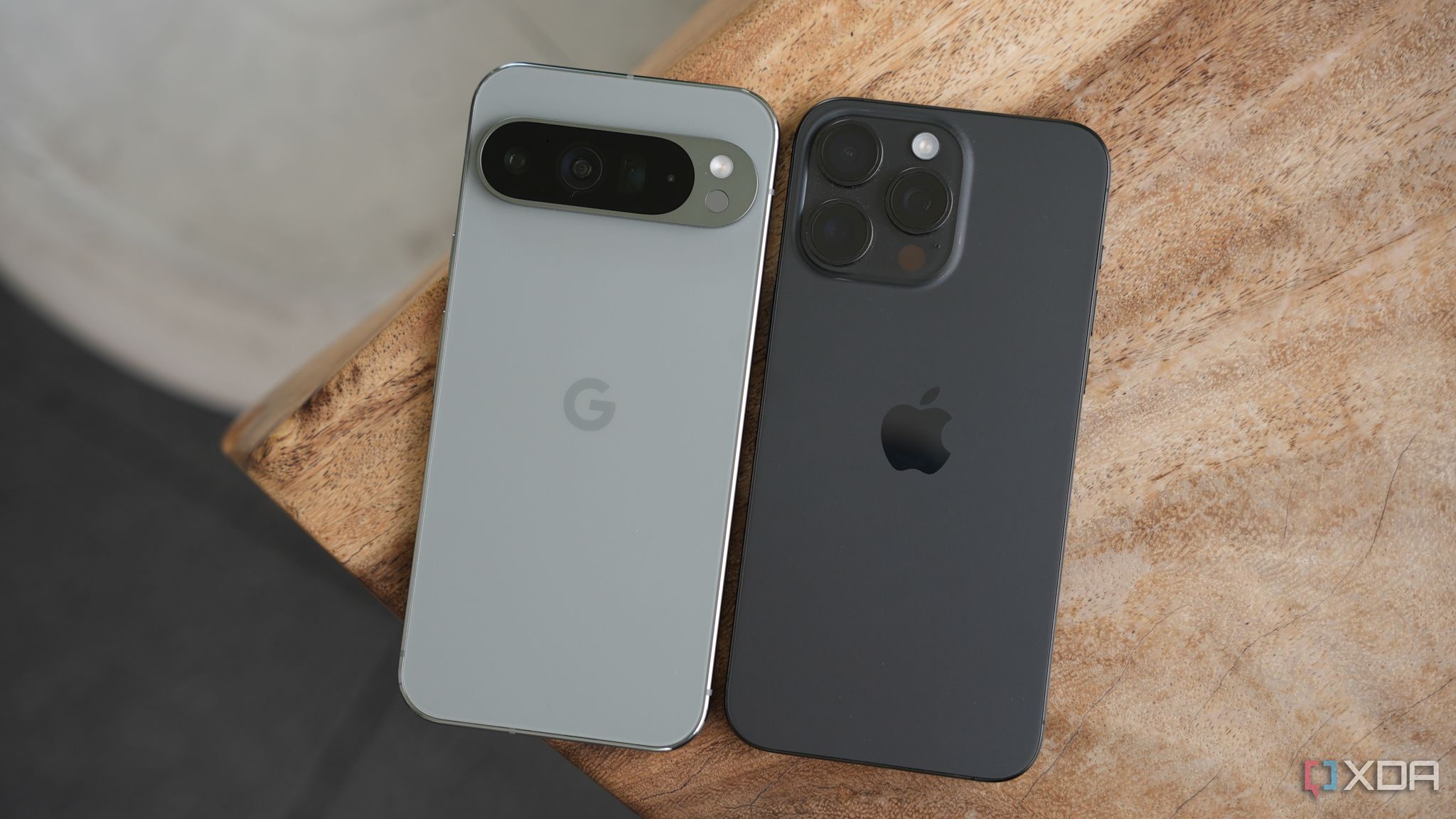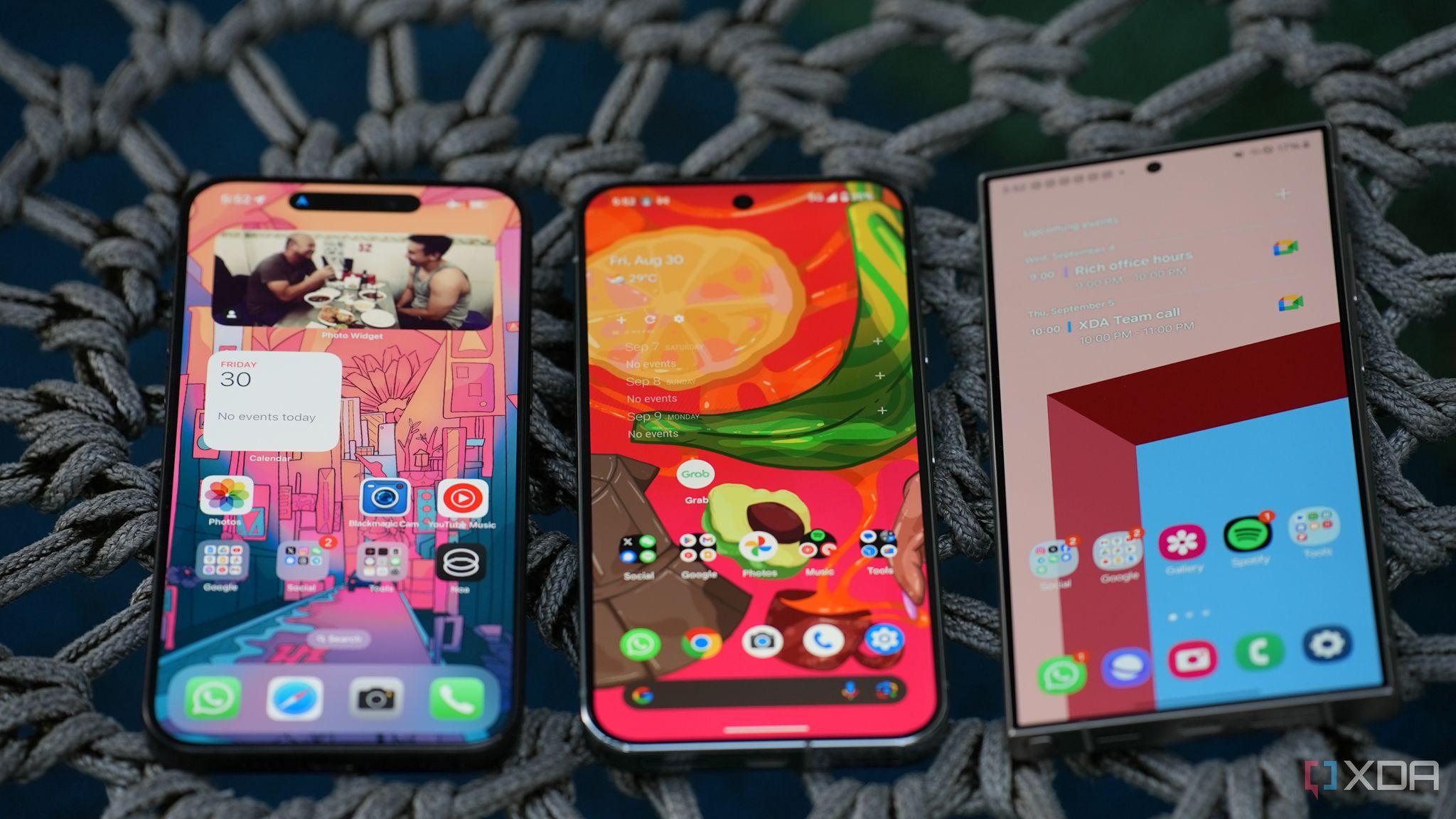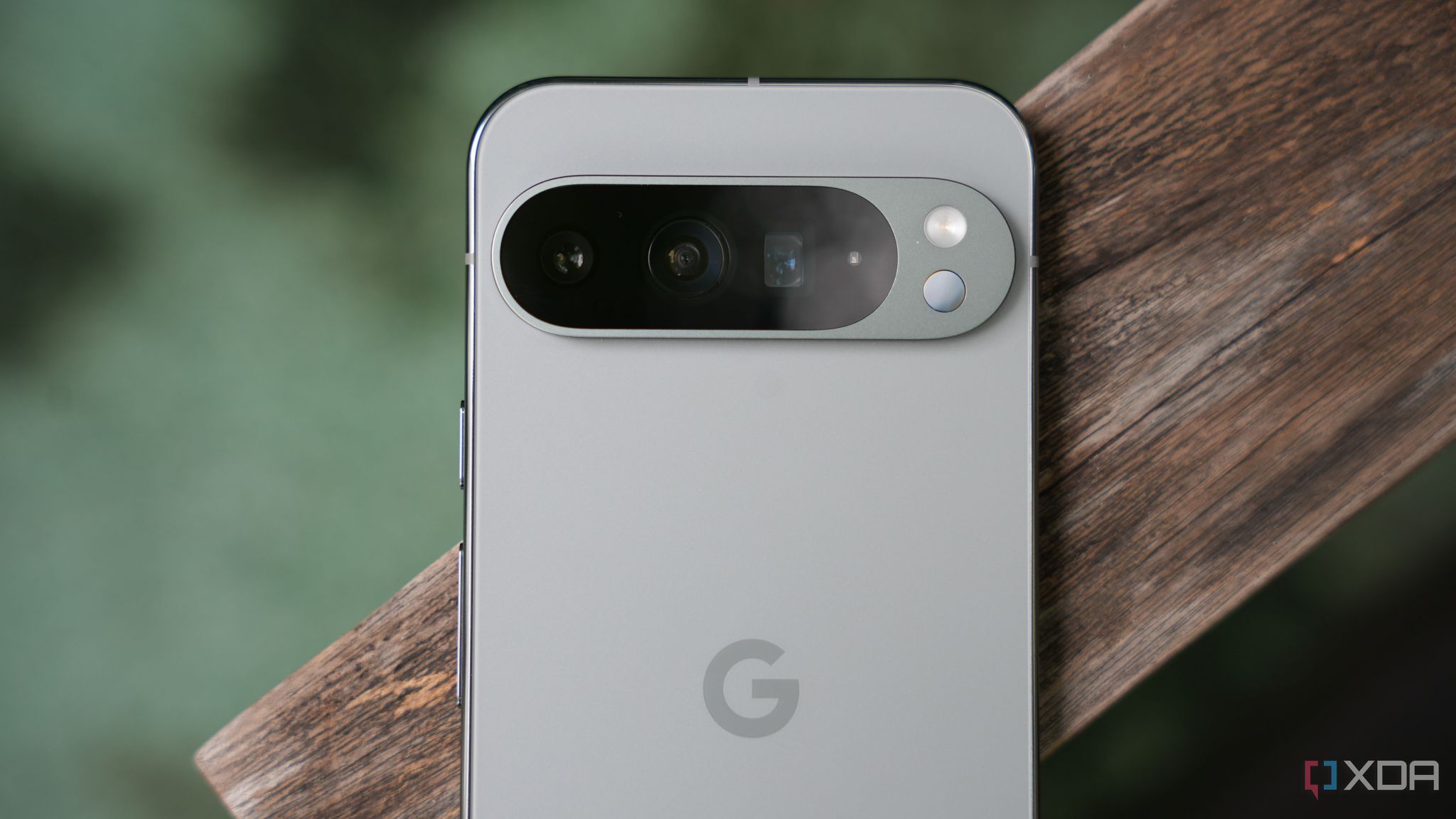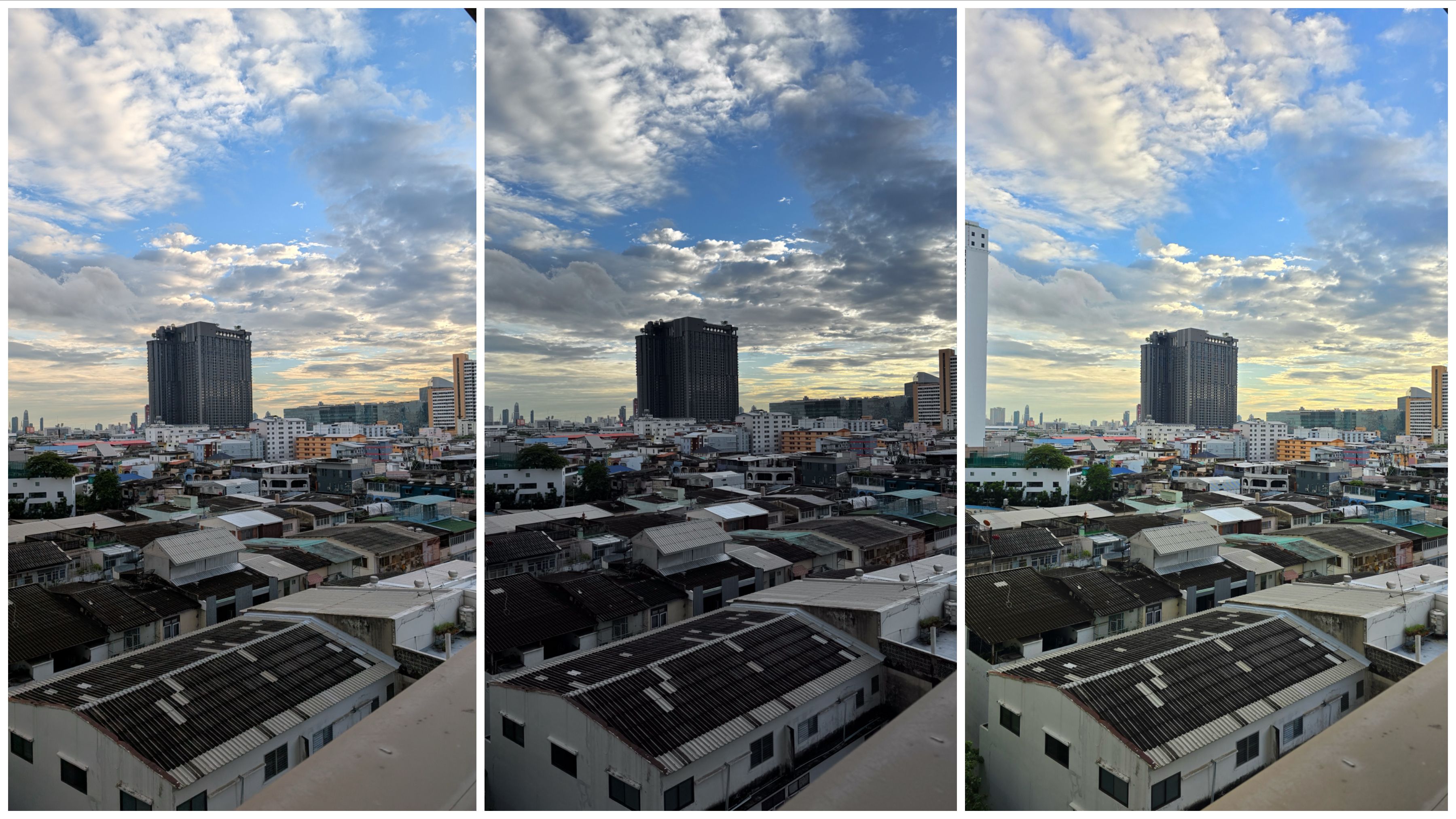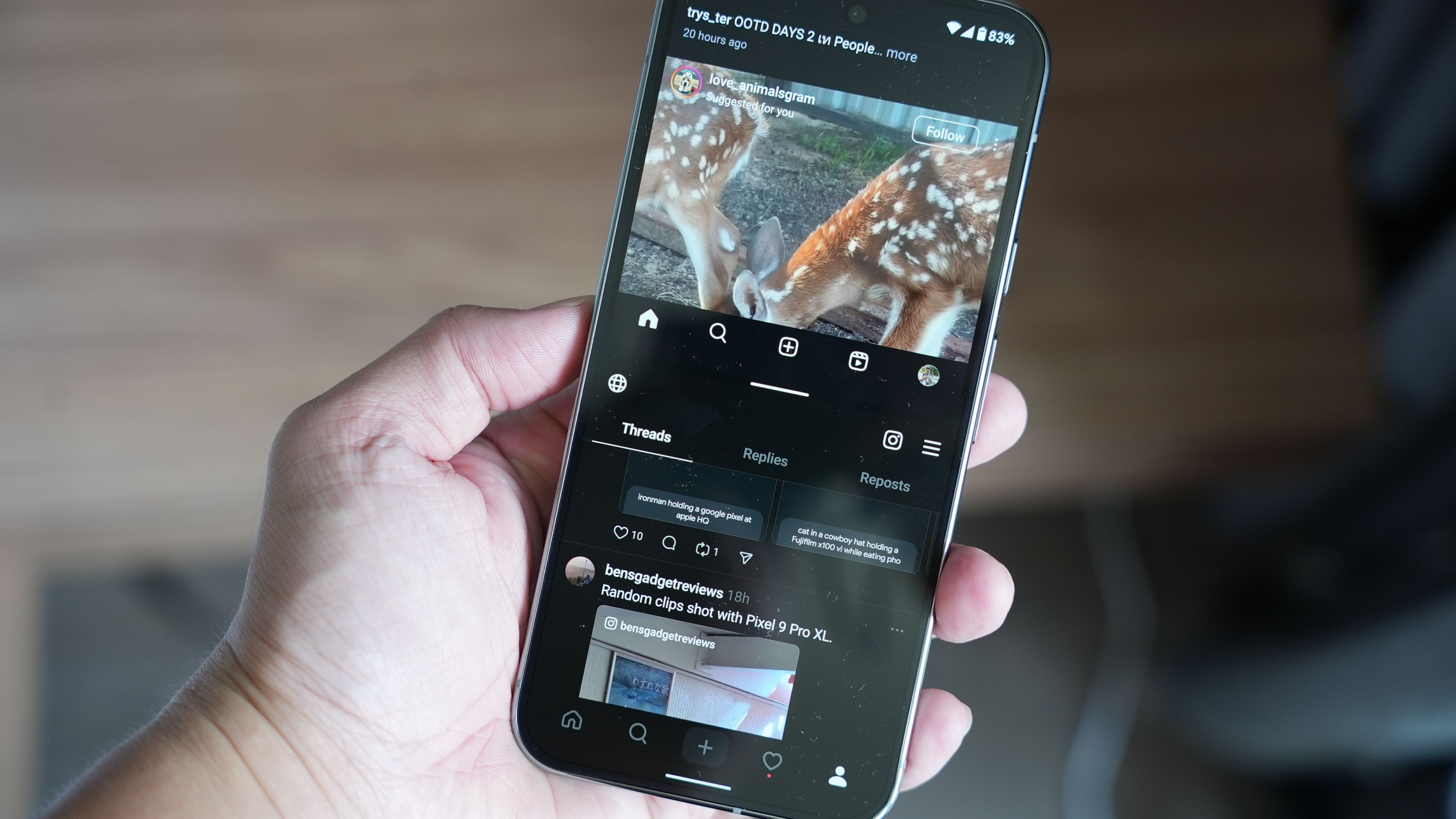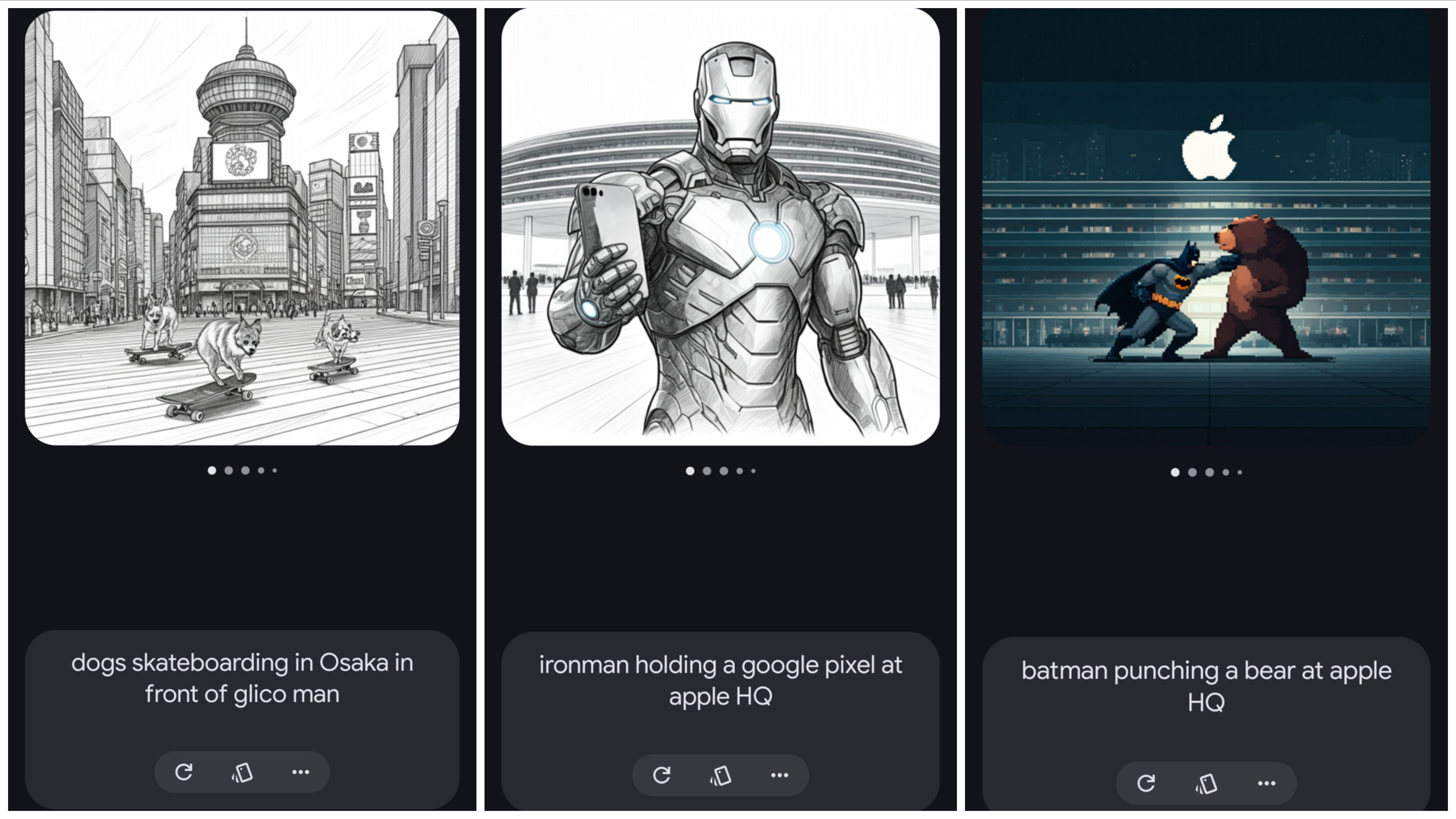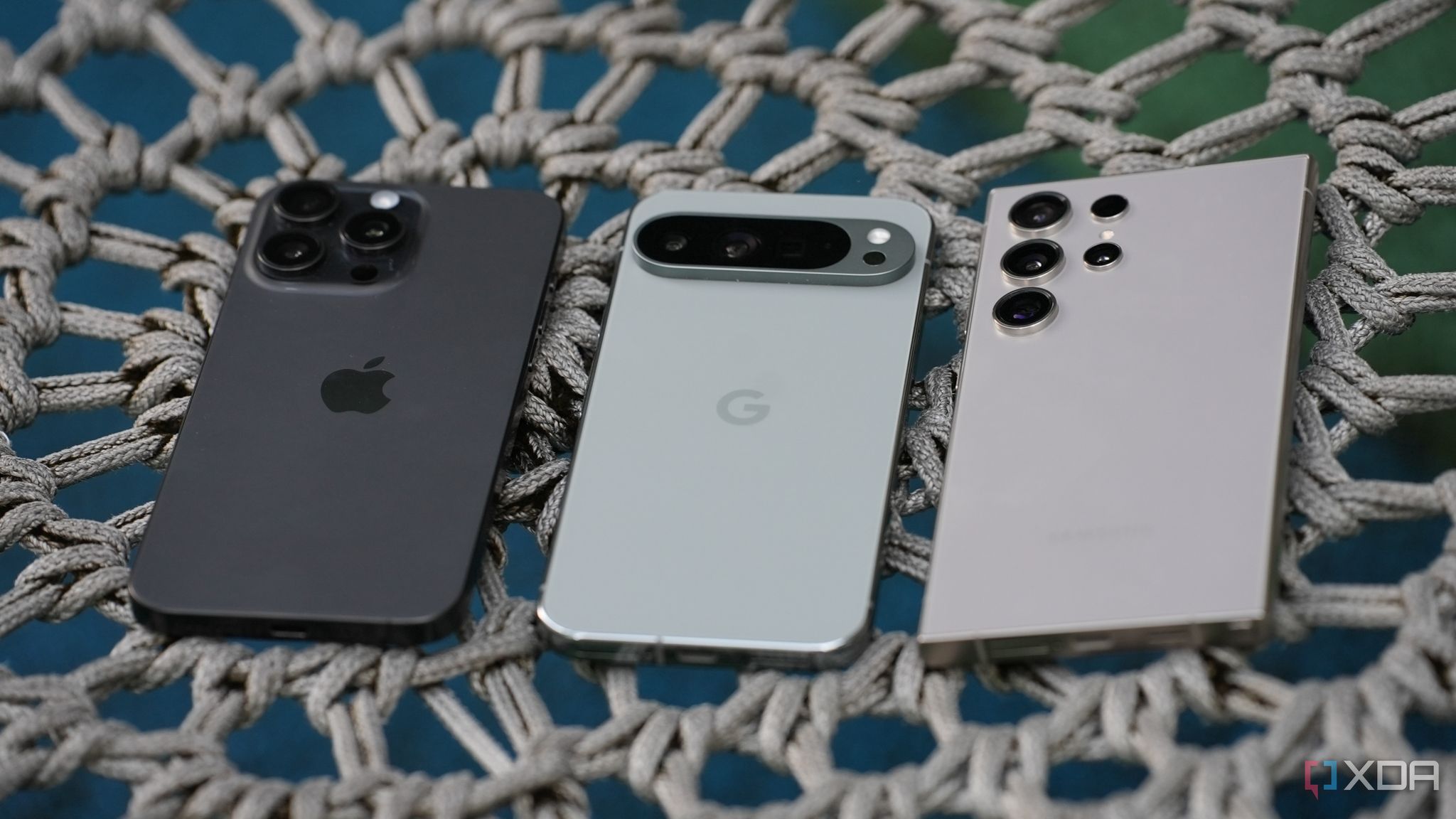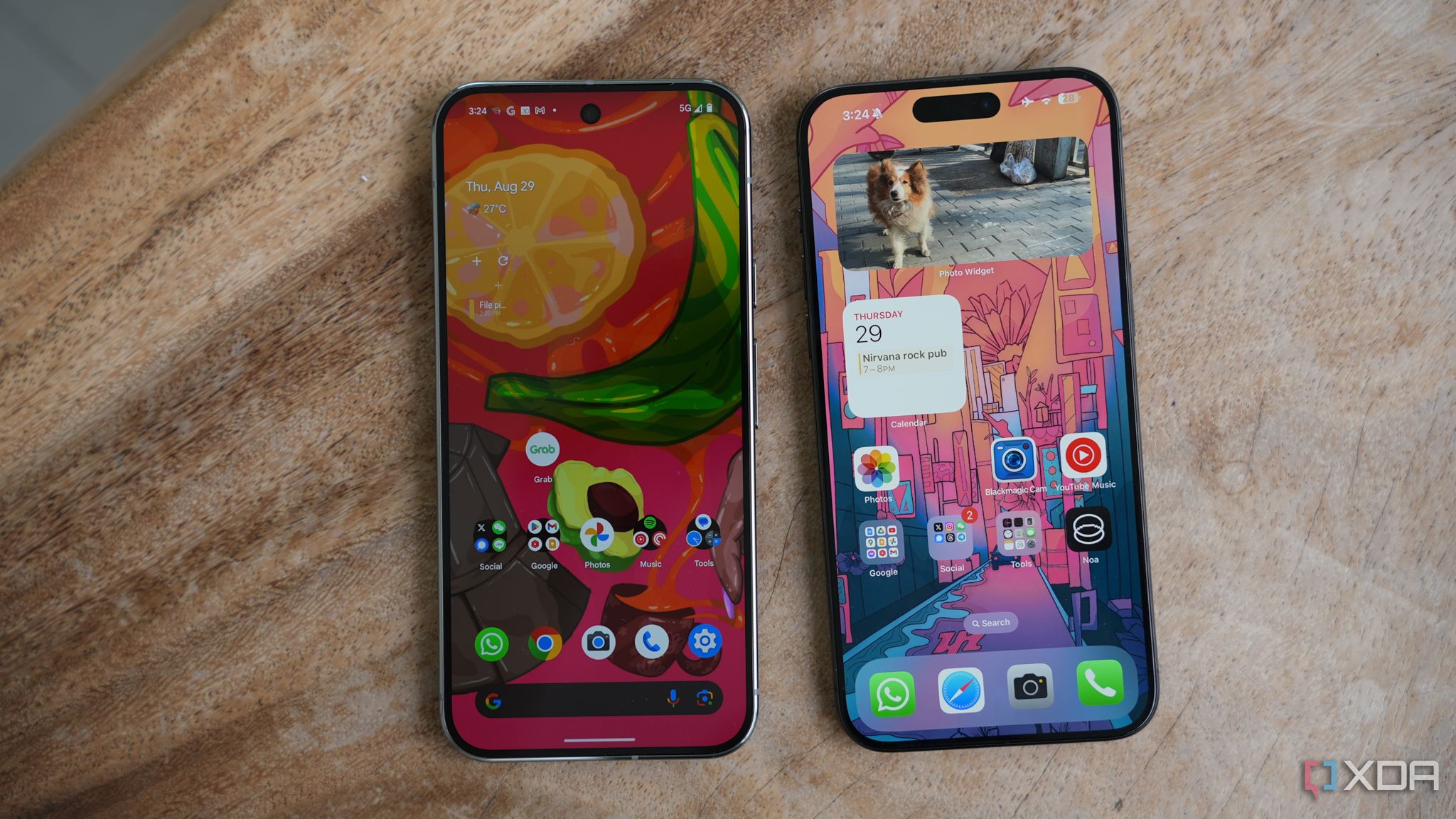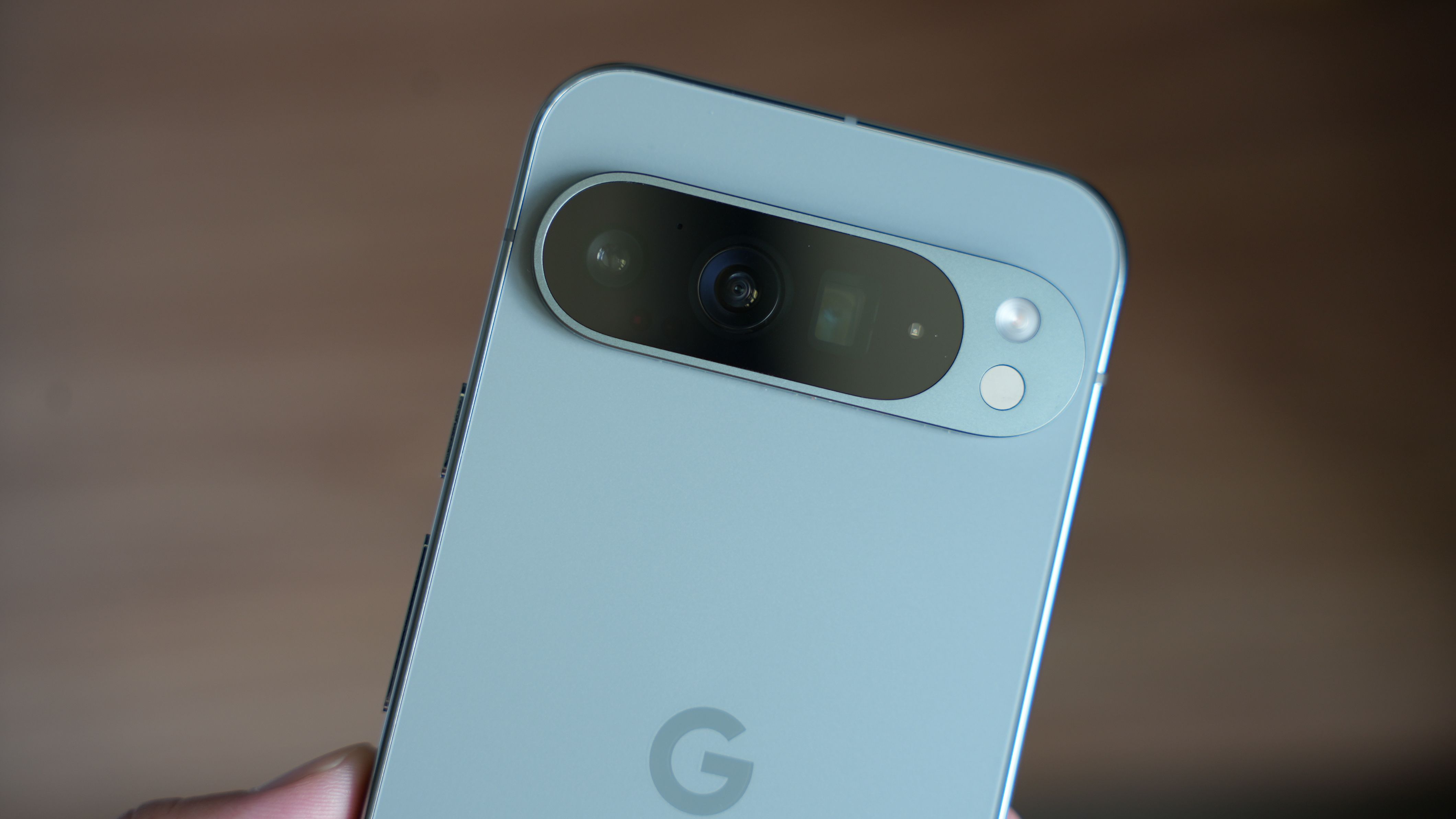Google Pixel phones have always had excellent software, but the elephant in the room was that Google hardware has been below par for the majority of its life cycle. In fact, I’d go as far as saying Google only finally got the hardware right last year with the Pixel 8 phones. Before that, there was always a glaring, significant hardware flaw of some kind, from the second Pixel’s display problems to the third Pixel’s hideous notch to the Pixel 6’s dim display and Pixel 7’s bad thermals. And even last year, the Pixel 8 hardware was nowhere near the best, it just wasn’t bad.
The hardware surged forward this year though with the Pixel 9, specifically the two Pro phones. I’m testing the larger XL model, but the smaller “just” Pro is the same phone save for having a smaller battery and screen. These Pro phones are easily the best hardware from Google yet, and they’re good enough to go toe to toe against the best from Apple or Samsung without feeling behind. The screens finally have bezels as thin as the competition, and have impressive maximum brightness. The fingerprint scanner is fast and reliable, and the Tensor G4, while still slower than the best Apple or Qualcomm chip, has better thermals. The phone also has a new very iPhone-like design that I think looks and feels great.
But, of course, hardware is only half the story. With the Pixel series, it’s always about Google smarts, and the 9 Pro phones double down on the generative AI goodness introduced in last year’s Pixel 8 series. However, a lot of these features (e.g. Circle to Search, using generative AI to make realistic-looking changes to photos) are also available on Samsung’s Galaxy S phones. So in a way, the Pixel 9 Pro phones this year do not have any unique must-have software feature.
About this review: This review was written after testing a self-purchased Pixel 9 Pro XL. Google obviously had no input in this review.

Google Pixel 9 Pro XL
The most polished Pixel yet
The Google Pixel 9 Pro XL is the true successor to the Pixel 8 Pro, now with a taller screen, an all-new Google Tensor G4 chip, and fully upgraded cameras for even better photos and video.
- Beautiful and premium hardware
- Noticeably improved video performance from last year
- Generative AI features can be useful (though this really depends on the person)
- 128GB base model in late 2024 is absurd
- Pixel UI is bland and restricting: unremovable widgets, no floating window multi-tasking, etc
- Camera hardware is fine in its key markets, but clearly behind the Chinese Ultras from Vivo, Xiaomi and Oppo
Google Pixel 9 Pro & 9 Pro XL: Pricing and availability
The Google Pixel 9 Pro and 9 Pro XL are on sale now. The standard Pro starts at $999, while the Pro XL starts at $1,099. These prices represent a $100 increase from last year, and they are for the very stingy 128GB base storage. If you want more storage, you’ll have to pay another $100 to get the 256GB version. There’s also a 512GB model for another extra $100 on top.
Compared to phones from Samsung and Apple, the Pixel 9 series is not as widely available worldwide. The phones sell officially in 32 countries, including the US, Canada, France, Germany, UK, Japan, Singapore, and many others.
Hardware and design
Don’t be fooled by the XL moniker, the Pixel 9 Pro XL isn’t “extra large” by modern flagship standards: it has a 6.8-inch screen, weighs 221g (under 8oz), and measures 8.5mm thick, which puts it pretty much in line with every other highest-tier slab phone on the market, and not that far off from last year’s Pixel 8 Pro (without any XL moniker). Google did this because it wanted to release a smaller flagship by comparison (the Pro comes with a 6.3-inch screen).
The Pixel 9 Pro XL’s new flat-sides design is very similar to the iPhone, and in fact, the in-hand feel between the 9 Pro XL and the iPhone 15 Pro Max is almost identical to me.
The OLED screen is plenty sharp at 1344 x 2992 (though out of the box it is set to a lower resolution), and gets up to a maximum brightness of 3,000 nits. This is among the brightest panels on the market, and you’ll definitely have no trouble seeing it under the sun. The bezels are slimmed down from last year’s relatively thick bezels too.
The Pixel 9 Pro XL has a matte glass back (covered by Gorilla Glass Victus 2 just like the display panel) and metal sides. I am not a fan of the glossy metal sides, but the rest of the phone looks and feels great. There’s more RAM in the new phone this year (16GB) which, paired with the Tensor G4 chip with better heat management, brings improved performance over last year’s model.
There’s 5,060 mAh battery inside, which is quite large, but it charges slowly at 37W wired or 23W wirelessly. Qi2 charging is not supported, but there are magnets around the back of the phone anyway for slower wireless charging, and I found my MagSafe chargers could attach to the Pixel and stay mostly still (doesn’t quite snap on as satisfyingly as Qi2 would).
Cameras
Half of the Pixel 9 Pro’s four total cameras are using new sensors: the selfie camera got the biggest hardware bump, from last year’s weak 10.5MP to a 42MP f/2.2 shooter; and the ultra-wide camera this year has a faster f/1.7 aperture.
The main and telephoto lens remain the same as last year: a 50MP f/1.7 main (wide) camera, and an f/2.8 5X Periscope zoom lens. And for the most part, images snapped with the main and tele lenses look identical to last year, but the selfie and ultra-wide are noticeably better, especially the former.
Still, Google’s software processing has improved, because videos are noticeably more stable than last year. Although this is merely Google playing catch up, because Pixel phones before had below par video stabilization when compared against the iPhone or best Samsung phones.
Overall, though, the Pixel cameras produce images that should please most people, especially the average consumer. But for me, especially having tested the best Chinese phones with superior camera hardware, the Pixel’s images appear a bit too over-processed, too digital. Images lack the depth of something captured by a Vivo X100 Ultra, especially in telephoto images (the Vivo zoom lens has a much larger sensor size). Google also tends to cool the color temperature of every image. The samples below are two sets of 5X shots captured by the Pixel 9 Pro XL (left) and the Vivo X100 Ultra (right), and Vivo’s images are just far superior and natural looking, with more depth, more accurate colors.
Compared against its main competition, the iPhone 15 Pro Max and Galaxy S24 Ultra, the Pixel 9 Pro XL produces shots that are generally a bit more pleasing to my eyes, but it’s very close between these three phones.
Main camera, Pixel 9 Pro XL (left); iPhone 15 Pro Max (middle); S24 Ultra (right)
I must go out of my way to give credit to the Pixel’s selfie camera, however, as it’s probably the best selfie camera in any phone right now. The second selfie in the below set was taken in a dark bar drenched in red lighting, and the shot came out cleaner than what the Vivo or iPhone could muster in the same scene.
I must go out of my way to give credit to the Pixel’s selfie camera… as it’s probably the best selfie camera in any phone right now
As of the time of the writing of this article, the Pixel 9 Pro XL cameras are slightly better than the iPhone 15 Pro Max (mostly in color science), and about on par with the Samsung Galaxy S24 Ultra. So, in the Pixel’s intended market, it is definitely one of the top two cameras right now. It’s very capable. But the reality is, the best Chinese phone cameras are so far ahead in hardware that software processing alone cannot close the gap.
Software and new features
Because Google pushed up the release date of the Pixel by nearly two months, the Pixel 9 Pro XL ships with Android 14, not the Android 15 that’s rolling out soon. This is also odd as I had become accustomed to testing new Pixels alongside new Android software.
So, for the most part, the software experience here is similar to the Pixel 8 series, but there are some useful new AI features that are exclusive to the Pixel 9 series for now – but this is merely due to Google gatekeeping features on new phones to entice sales.
The software experience is similar to the Pixel 8 series, but there are some useful new AI features
The first is Pixel Studio, a standalone app which allows the Pixel phones to generate original images with text prompts, and it works very well. In the samples below, you can see the art generated is pretty aesthetically pleasing, and I like the option to generate in various styles, such as 3D art, pencil sketch, anime style, or 8-bit video game graphics.
Pixel Studio generated AI art
Right now, the service cannot generate humans (or I suppose, humans with faces showing, because I can generate images of Batman and Iron Man just fine).
I know being able to create AI generated art isn’t of use for everyone. I have many peers who see no value in this feature. I suppose it depends on the person, because I like this a lot. Some of the art generated above genuinely looks good to my eyes, and I would print them out to put as posters on my wall, or make greeting cards. For example, I have a nephew who loves Batman and 8-bit gaming. I could totally take the above image of Batman punching a bear in front of Apple Park and gift it to him as a card.
The other big feature is similar to Pixel Studio, but with real-life images. This is a feature called “Reimagine” that’s built into the Pixel’s “Magic Editor.” Here, you can take any image (even ones snapped years ago with another phone), highlight parts of the image, and change it to something else with voice prompts. Google is not allowing alteration of human faces and bodies, but you can easily change the background, objects, or add animals that are entirely AI-generated. They look quite realistic, at least when viewed on a phone screen or on Instagram. If you blow up the image on a 30-inch monitor, then you can see the usual AI mistakes.
The Pixel 9 Pro XL also supports Gemini Live, which is a more advanced version of Gemini in which the assistant talks with you in a free-flowing conversation. You are able to speak to interrupt the assistant, and they will respond with new context. It’s quite intelligent, but this is an app that is not exclusive to the Pixel 9 phones. This same feature should be available on older Pixels and Samsung phones eventually.
Performance
The Tensor G4 is only slightly more powerful than the G3, so it’s no world beater. The chip is still a bit slow when it comes to handling anything image or graphics related. For example, trimming a video clip on the Pixel 9 Pro XL takes noticeably longer: the clip required a second or two of processing before I could begin trimming, and after I finished trimming, the exporting process seemed to take anywhere from 6-8 seconds, whereas iPhones do it instantly, and Qualcomm Snapdragon 8 Gen 3 phones do it in roughly 2-3 seconds.
This is not a dealbreaker at all, but it is just a fact that Tensor G4 is less powerful than the best chips in iPhones and other Android phones right now.
I also find the Pixel’s automatic screen brightness to be wonky. Often, when I’m indoors, the screen brightness drops to so low that images look dull. I use literally every flagship phone that hits the market and I don’t have this problem with any other phone. Look at the below image: I took the iPhone and Pixel from outdoors to indoors, and the Pixel’s automatic screen brightness dropped to such a low degree that the display looks noticeably dull. Over the course of using the phone, I find myself needing to manually dial up brightness a dozen times a day.
I also think Pixel UI is a bit lacking in features. Virtually all other Android phones give us the option to open an app in a resizable floating window, but not the Pixel, which still only offers split-screen as the only form of multi-tasking. Split-screen is just more restricting and not as free-flowing as a window that I can shove anywhere on the screen.
These are all relatively small nitpicks that don’t break the overall usage experience. I find the Pixel 9 Pro XL still enjoyable to use, with excellent quality of life features like “Now Playing” (which ambiently identifies music playing near you), or the best-in-class voice dictation with nearly 99% accuracy. But these features are not new, they’ve been in Pixel phones for years.
Battery life has been okay for me. I have to preface this by saying that I am a heavy phone user who is not tied to a desk most days. I am outside riding my bike, or walking all over the city 7-10 hours a day. I also snap a lot of photos and post to Instagram Reels often. With my usage, the Pixel 9 Pro XL can only last about nine to ten hours on a single charge before battery dips to under 10%, but most people will probably get much longer than that on a charge.
This isn’t particularly bad battery life to be honest — especially considering I am a very heavy user — but it is worse than the Galaxy S24 Ultra or iPhone 15 Pro Max battery life. But most people these days have battery packs on them, and living in a major city I can always find a charger middle of the day, so it’s not a big deal to me.
Should you buy the Pixel 9 Pro XL?
You should buy the Pixel 9 Pro XL if:
- You love the Pixel experience and have the means to upgrade
- You want the smartest phone that’s most aware of your surroundings and your Gmail inbox
- You have use for Google’s scary good generative AI features
You should NOT buy the Pixel 9 Pro XL if:
- You want a phone with the best raw power perfomance or battery life
- You want the best cameras on a phone and you’re open to importing flagships from Vivo, Xiaomi, or Oppo (or if you just live in markets where those phones are on sale officially)
- You have the Pixel 8 Pro and find the phone perfectly fine
The Google Pixel 9 Pro XL is an excellent all around phone, and is definitely one of the best phones money can buy right now. But I am not sure it stands out from existing competition like the S24 Ultra (which has many of Google’s generative AI features). The price hike also makes it noticeably pricier than something like the OnePlus 12, which has a more powerful chip.
I am a camera enthusiast with a love of mobile photography, so the fact the Vivo X100 Ultra or Xiaomi 14 Ultra are still clearly better means I will ultimately jump back to one of those phones. But for now, I really enjoy using a phone that is fully plugged into Google’s software, with features like Circle to Search and superior connectivity with Gemini or Google Assistant making my life just a bit easier.
Ultimately, the Pixel phones have always been mainly for casual consumers who want a charming, Apple-like phone without diving into Apple’s walled garden. And the Pixel 9 Pro XL is it. For enthusiasts, I think the S24 Ultra still brings more to the table, and phones from Oppo/OnePlus or Xiaomi offer more hardware for the dollar.
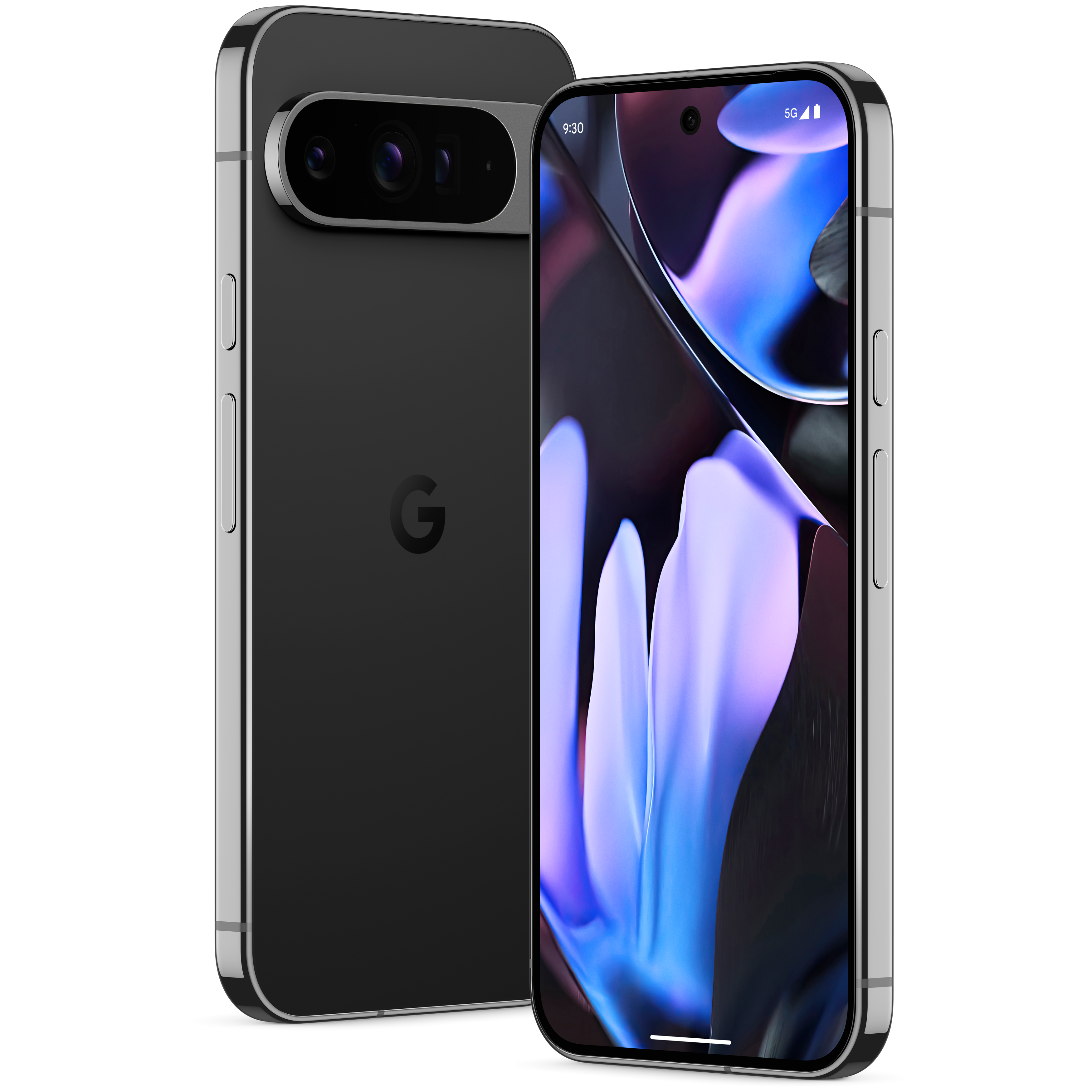

Google Pixel 9 Pro XL
The most polished Pixel yet
The Google Pixel 9 Pro XL is the true successor to the Pixel 8 Pro, now with a taller screen, an all-new Google Tensor G4 chip, and fully upgraded cameras for even better photos and video.
- Beautiful and premium hardware
- Noticeably improved video performance from last year
- Generative AI features can be useful (though this really depends on the person)
- 128GB base model in late 2024 is absurd
- Pixel UI is bland and restricting: unremovable widgets, no floating window multi-tasking, etc
- Camera hardware is fine in its key markets, but clearly behind the Chinese Ultras from Vivo, Xiaomi and Oppo

